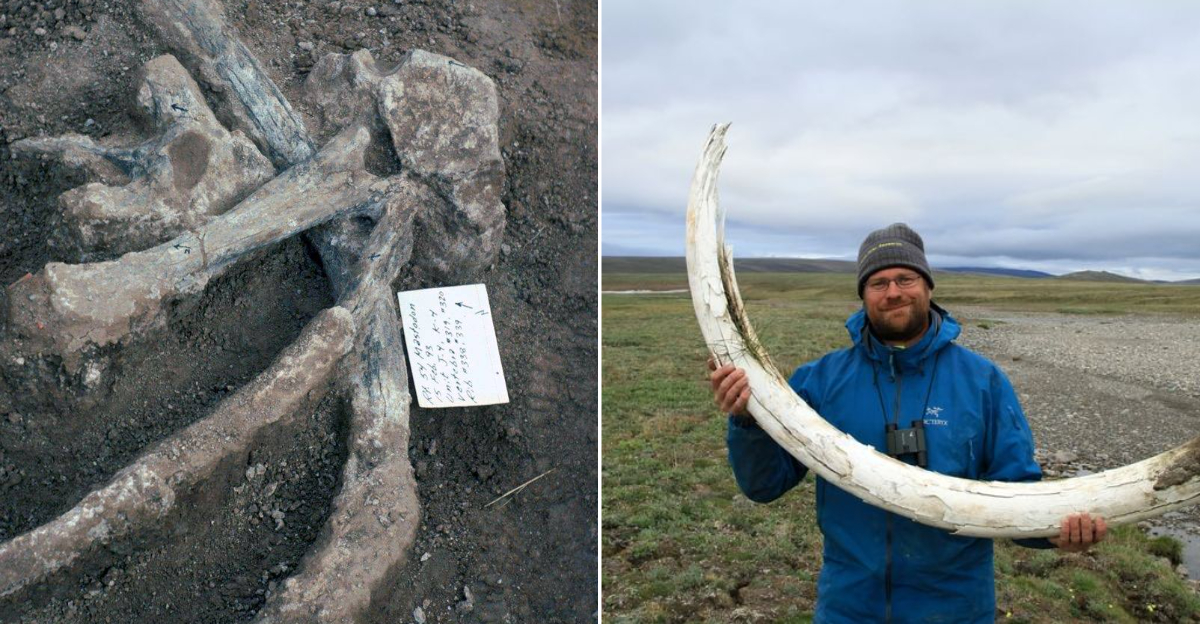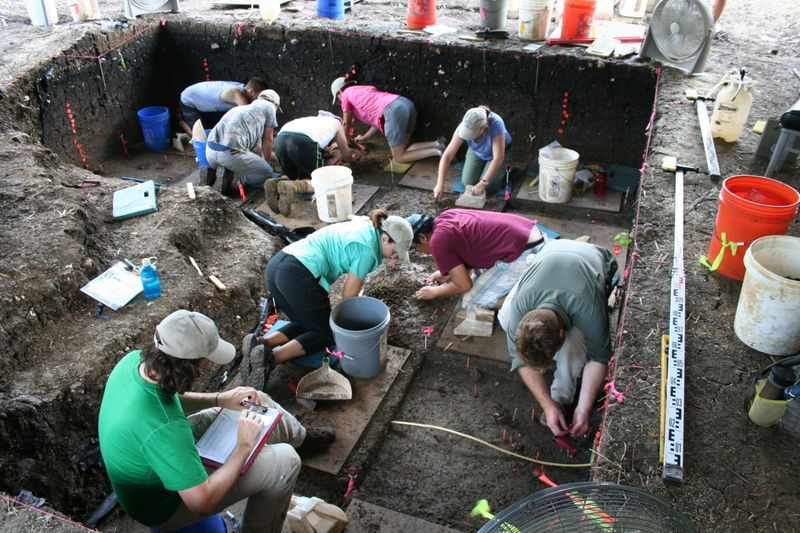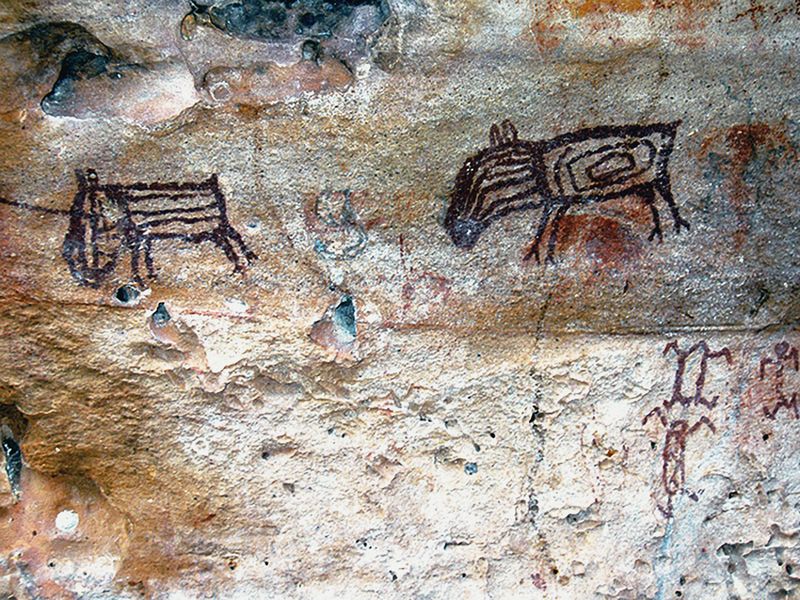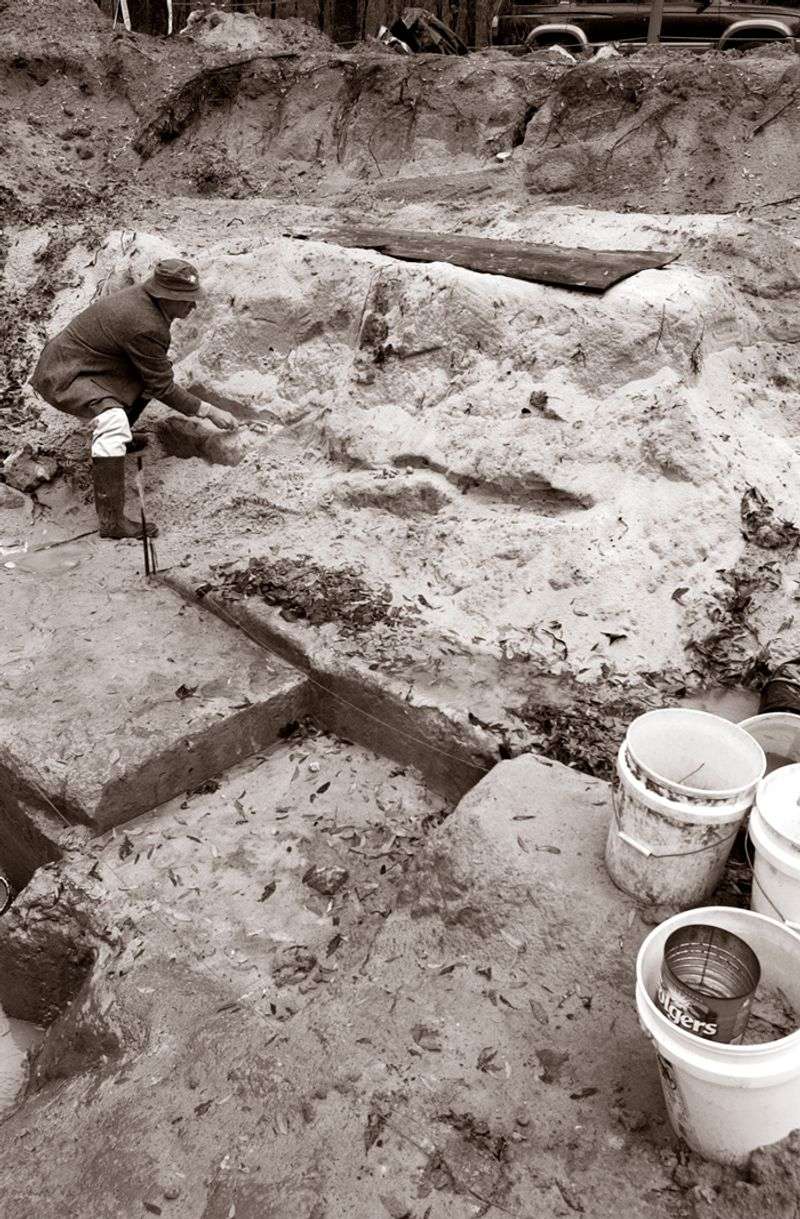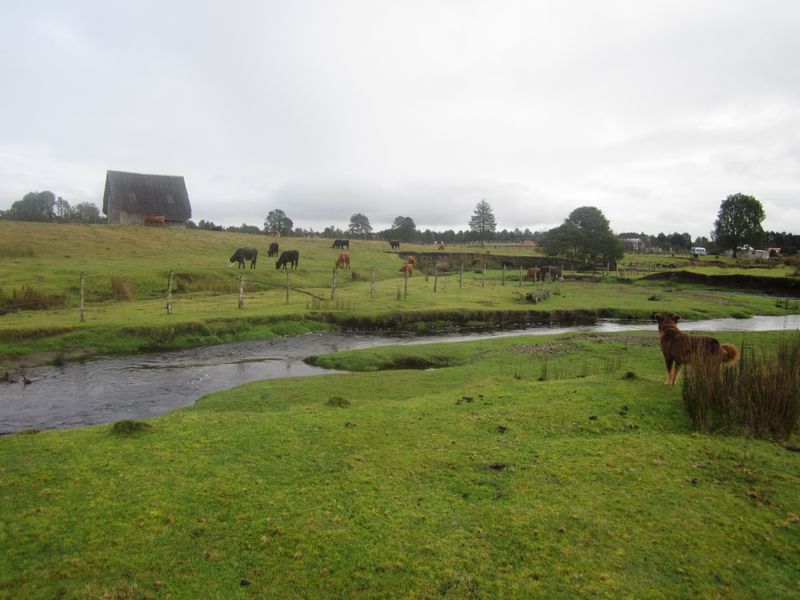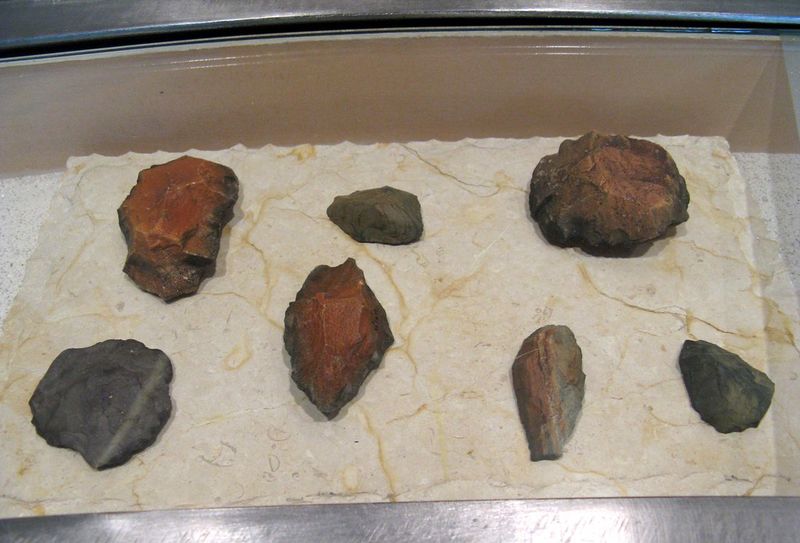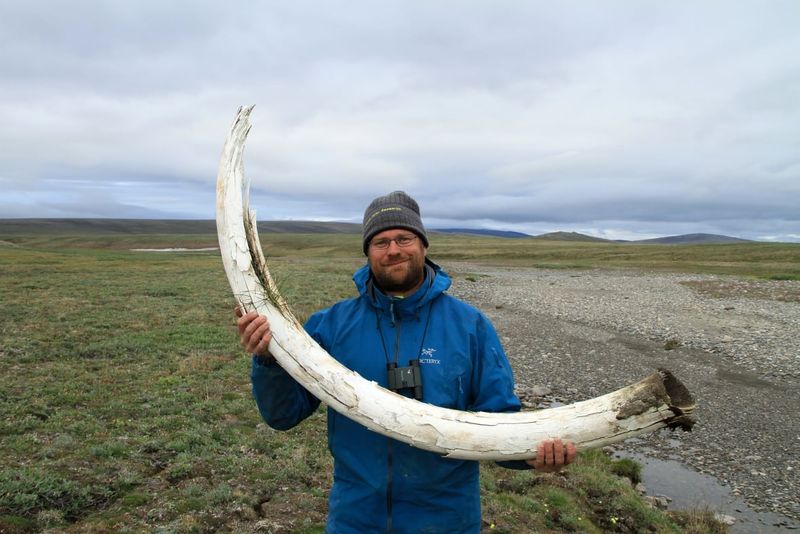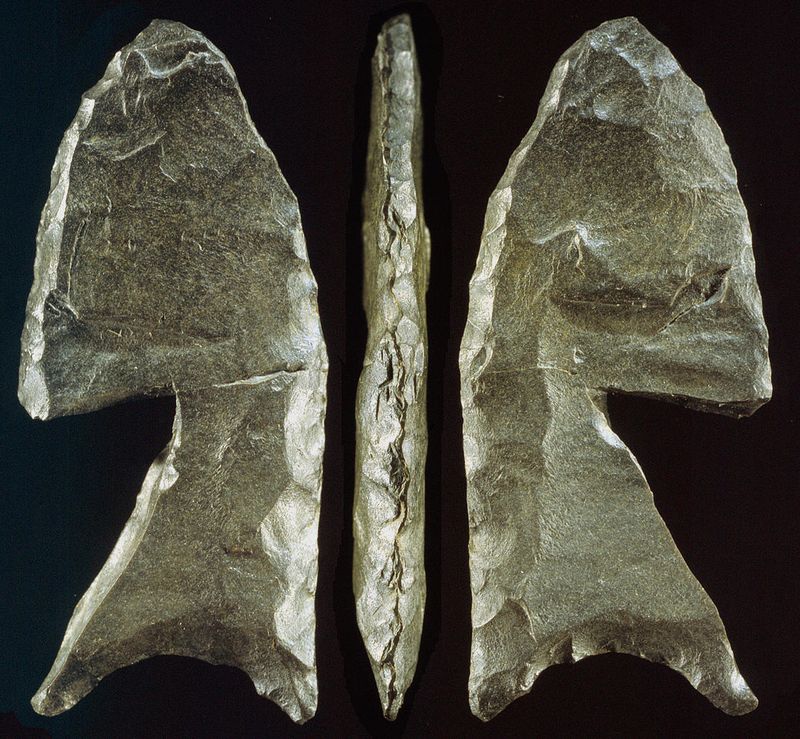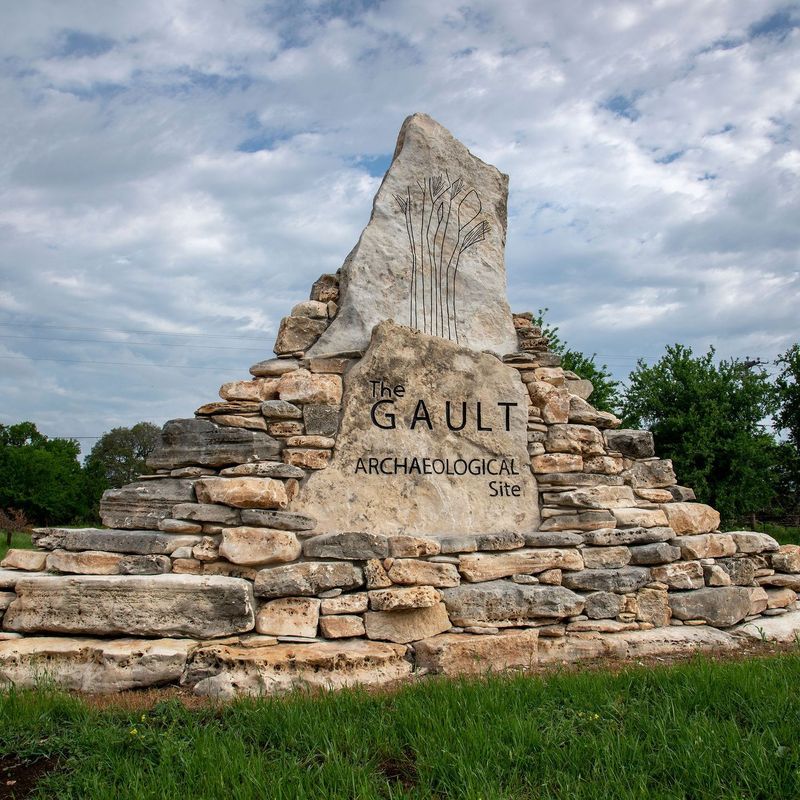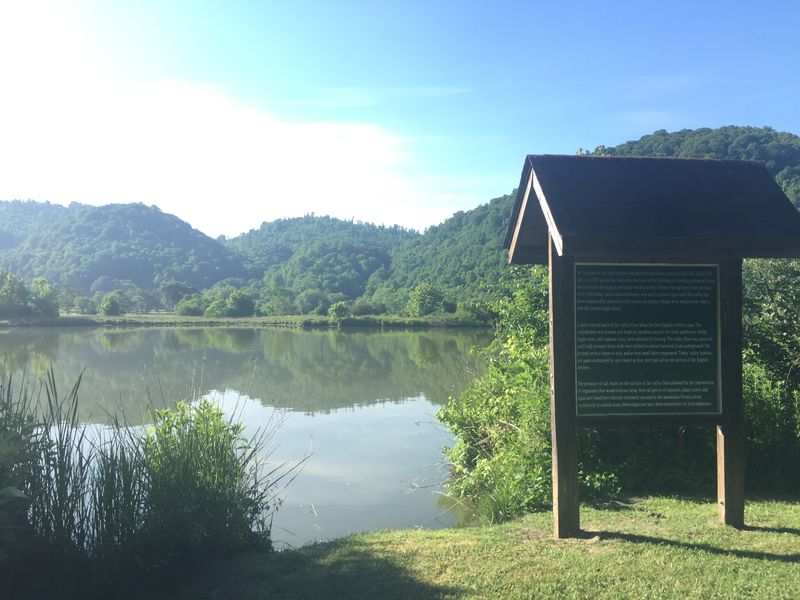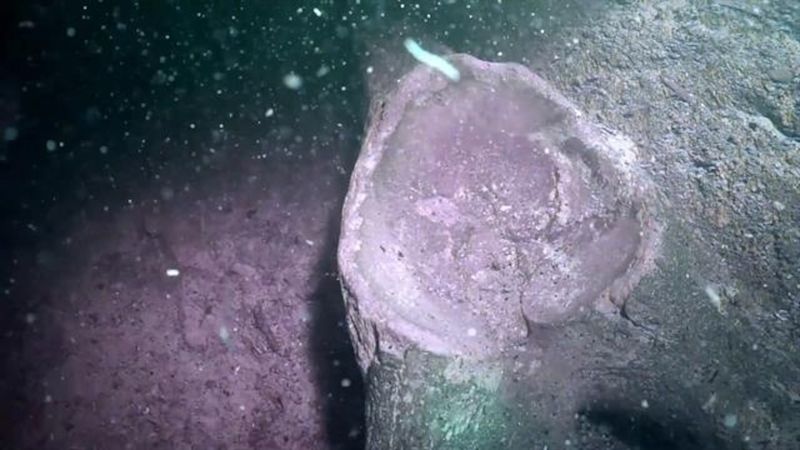From bones buried in caves to mysterious artifacts that defy explanation, these mind-blowing discoveries are challenging everything we thought we knew about the first people to walk the land we now call America. Forget the old textbooks—these finds might force us to start over.
1. The Cerutti Mastodon Site
Linked to the San Diego mastodon find, the Cerutti Mastodon Site hosts a collection of stone tools and smashed bones dating back 130,000 years. Some experts assert these were deliberately fractured by humans, suggesting an American presence over 100,000 years earlier than the Clovis culture. This extraordinary claim, while controversial, revolutionizes our understanding of early human migration. Could humans have been in America much earlier than previously accepted? The site’s findings challenge traditional timelines, urging a reevaluation of prehistoric human activities in the region.
2. Buttermilk Creek Complex – Texas
Buttermilk Creek Complex, located in Texas, offers compelling evidence against the Clovis-first model. Dating back nearly 15,500 years, this site contains thousands of tools that predate the Clovis culture by a millennium. It stands as one of the most robust arguments for human presence in America before Clovis. These findings invite us to reconsider migration patterns and the diversity of early settlers. Could this site be a key to understanding the complex web of human history in North America? Its implications are vast, challenging established theories of early inhabitants.
3. Pedra Furada – Brazil
Pedra Furada in Brazil presents a fascinating puzzle for archaeologists. Charcoal and stone tools suggest human presence as far back as 32,000 years ago, well before the earliest confirmed sites in North America. This find has the potential to reshape theories on migration into the Americas. What if humans reached South America first, flipping the script on accepted narratives? This site’s artifacts open new dialogues about prehistoric journeys, challenging the notion that migration only flowed from north to south.
4. Topper Site – South Carolina
The Topper Site in South Carolina has stirred considerable debate among archaeologists. Tools found beneath Clovis layers have been dated back 15,000 to 20,000 years, suggesting a pre-Clovis human presence. Though critics remain skeptical, if proven accurate, the discovery could officially end the Clovis-first model. Could this site offer insight into a broader and more complex picture of early human settlement in the Americas? This dig challenges previous conceptions and invites us to explore alternative narratives of human history.
5. Meadowcroft Rockshelter – Pennsylvania
Meadowcroft Rockshelter in Pennsylvania stands as a cornerstone in the debate over America’s earliest inhabitants. With evidence suggesting human occupation nearly 19,000 years ago, this site pushes the boundaries of known history. Initially, its legitimacy sparked heated debates, but it is now widely accepted, marking it as one of North America’s oldest sites. Could this rockshelter be a glimpse into the life of ancient peoples? Its discoveries continue to challenge and enrich our understanding of prehistoric human existence.
6. 130,000-Year-Old Mastodon Bones – San Diego, California
The discovery of 130,000-year-old mastodon bones in San Diego could upend our understanding of early human presence in North America. Unearthed in 1992, these bones showed signs of being broken by tools, sparking debate among scientists. If true, this predates the Clovis culture by over 100,000 years. Could this mean that humans were present in America far earlier than previously thought? The implications are profound, challenging the accepted timeline of human migration. Though skepticism remains, this find pushes the boundaries of our historical narratives, urging further investigation into early human activities in the Americas.
7. Monte Verde – Chile
Monte Verde in Chile has long been heralded as a pivotal discovery in understanding early human migration. Dating back 18,500 years, it suggests coastal-hopping routes to South America before Clovis appeared in the north. This site offers a compelling narrative that challenges traditional migration theories. What if early humans ventured along coastlines, reaching South America earlier than imagined? Monte Verde’s evidence reshapes our comprehension of prehistoric journeys, urging us to embrace more complex migration models that defy conventional wisdom.
8. Calico Early Man Site – California
The Calico Early Man Site in California is shrouded in controversy. Some claim it contains tools over 200,000 years old, predating any known American inhabitants. Mainstream scientists often dismiss these assertions, yet the site continues to intrigue. Could it represent a forgotten chapter in human history? While skepticism abounds, the potential implications of these findings encourage a deeper exploration. What if the Calico tools are legitimate, pointing to a much earlier human presence in North America than previously thought?
9. White Sands Footprints – New Mexico
In 2021, the discovery of human footprints at White Sands, New Mexico, shook the archaeological world. Dating back 23,000 years, these prints were found in ancient lakebed sediments and offer concrete evidence of pre-Clovis humans in North America. This find not only challenges but redefines our understanding of early human timelines in the Americas. Could these footprints represent a long-lost narrative of prehistoric settlement? Their presence urges a reevaluation of human history and migration on this continent.
10. Tusk Carvings at Old Crow Basin – Canada
In the frigid expanses of Canada’s Yukon, mammoth tusks with possible human-made carvings have emerged at Old Crow Basin. These markings are controversial yet intriguing, potentially signaling human habitation in Arctic regions far earlier than previously believed. Could these carvings represent a forgotten era of human creativity and survival? While debated, they invite speculation about the adaptability and ingenuity of ancient peoples facing harsh climates. This discovery encourages us to explore the artistic and functional aspects of early human life.
11. Cactus Hill – Virginia
Cactus Hill in Virginia reveals tantalizing hints at an earlier human presence on the East Coast. Stone tools and hearths here date back nearly 18,000 years, predating established timelines. Could this site offer new perspectives on migration routes into America? Its findings support the idea of diverse pathways, suggesting that early humans may have traveled through multiple corridors. This site challenges our understanding, urging a reconsideration of how early peoples arrived and settled in North America.
12. Gault Site – Texas
The Gault Site, near Buttermilk Creek, offers a rich tapestry of history with tools predating Clovis culture. Signs of continuous human presence stretching back over 16,000 years challenge the notion of brief or sporadic early migrations. What if early settlers established long-lasting communities in North America? The evidence from Gault prompts a reevaluation of how we perceive early human activities, suggesting complex societal structures. This site’s findings enrich our understanding of prehistoric life and migration.
13. Saltville Valley – Virginia
Saltville Valley, Virginia, holds animal bones with intriguing cut marks. Some believe these marks, possibly from stone tools, indicate butchering activity over 14,000 years ago, well before such behavior was expected in the region. Could this valley be a window into the hunting practices of early humans? These findings challenge perceptions of prehistoric life, suggesting organized hunting and possibly social structures. Saltville’s discoveries invite us to rethink the complexity and adaptability of ancient human communities.
14. Burnham Site – Oklahoma
The Burnham Site in Oklahoma reveals large-scale hunting practices nearly 14,000 years ago. Charred bison bones and tools found here suggest organized societies much earlier than previously thought. Could these findings depict a new narrative of early human life in America? This site challenges assumptions about the sophistication and capabilities of ancient communities. Its evidence urges a reconsideration of how prehistoric peoples hunted, organized, and thrived in diverse environments across the continent.
15. The Page-Ladson Site – Florida
Beneath a sinkhole in Florida’s Aucilla River, the Page-Ladson Site holds tools and mastodon bones dating back 14,550 years. This watery grave preserved evidence of early humans long before ice-free corridors opened. How did these ancient peoples thrive in such environments? The site’s findings challenge conventional migration models, suggesting early settlers navigated diverse and challenging landscapes. Page-Ladson enriches our understanding of prehistoric resilience and adaptation, offering a glimpse into the ingenuity of ancient American societies.
